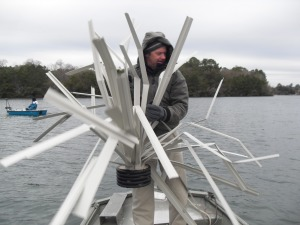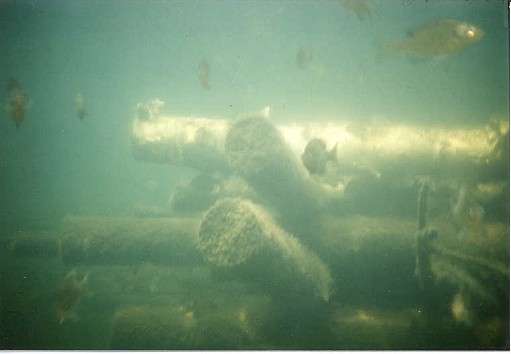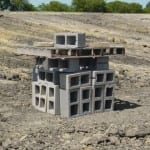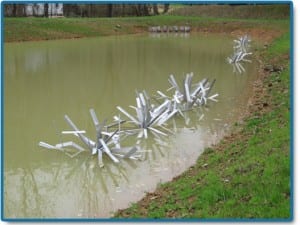SJRA LAKE BED GUIDELINES
- The recent drought has exposed many acres of lake bed resulting in the growth of terrestrial vegetation and the uncovering of debris that had previously settled on the bottom of the lake. When the lake refills, this vegetation and debris will provide valuable habitat for fish and other aquatic species, and the vegetation also helps stabilize sediments and improve water quality; however, while the lake is down, some vegetation and debris can cause nuisance problems.
To assist property owners and other lake users in determining the best means for managing vegetation or debris in the exposed lake bed of Lake Conroe, the SJRA has developed the following guidelines:
VEGETATION
The SJRA encourages businesses, community associations, and other lakefront property owners to not interfere with the growth of grasses and other terrestrial vegetation in the lake bed.
In cases where vegetation is creating a nuisance, lakefront property owners are allowed to mitigate the nuisance in and around their immediate dock area but are encouraged to use the most limited means possible, such as trimming off the tops of tall weeds.
Application of non-restricted use herbicides is only allowed with prior approval of the SJRA and only in areas that are completely above the influence of the waterline and immediately surrounding a property owner’s dock.
Widespread mowing of lake bed areas (i.e. not directly in front of a landowner’s tract) is not allowed unless specifically authorized by the SJRA.
DEBRIS
The SJRA encourages individuals to leave non-hazardous, inert debris in place in the lake bed to provide fish habitat. This can include items such as tires, concrete blocks, submerged logs, and other bulky items.
Non-hazardous, inert debris that has become exposed due to falling lake levels can be moved into deeper water provided it can be done so safely and to a location that will not create a hazard to navigation.
Trash and other non-desirable debris can be collected and placed in the SJRA’s lake debris Dumpster located at the west end of the Lake Conroe dam. This may include bottles, cans, and other trash.
No hazardous materials may be placed in the SJRA lake debris dumpster. Items such as paints, pesticides, electronics, batteries, used oil and filters, antifreeze, and other hazardous materials should be disposed of properly at an authorized facility.
Recently, residents in Montgomery County clamored for a second water source to complement Lake Conroe. And one exists, but the purpose of the Lewis Creek Reservoir is decidedly different.
Constructed in 1967, the Lewis reservoir wasn’t built to serve as a surface water storehouse. Nor was it designed to attract boating enthusiasts. In fact, the reservoir covers only 1.38 square miles of land between FM 1097 and Longstreet Road, west of Willis.
Instead, the reservoir’s role is to meet the electrical needs of Entergy Texas’ approximate 270,000 customers in the Montgomery. That is why when it comes to water, the Lewis Creek Reservoir takes precedent over its bigger brother, said Entergy spokeswoman Jill Smith.
The reservoir has a capacity of 16,400 acre feet of water – well below the 300,000 acre-feet of water in Lake Conroe. But the drought of 2011 has Entergy pumping water out of Lake Conroe and into Lewis Creek Reservoir.
The Beaumont-based utility company needs the extra water to make certain Entergy Texas can operate its two natural gas-fueled turbines.
“We have to maintain a level of operating capability,” Smith said.
Entergy Texas isn’t the only group shipping water out of Lake Conroe. Since mid-June, the SJRA has released 150 million gallons of water daily into Lake Houston. The release is part of an agreement between the SJRA and the city of Houston.
Entergy pays the San Jacinto River Authority 20 cents for each 1,000 gallons it uses to drive the turbines. Twenty-nine cents is SJRA’s standard raw water rate – effluent water is used by a number of golf courses – but Entergy gets a price break for treating its own wastewater, SJRA Deputy General Manager Jace Houston said.
“What Entergy is doing – pumping that wastewater – is pretty common,” he said “They don’t do this every day unless it’s needed.”
Entergy is restricted by contract to pump no more than seven million gallons into the Lewis Creek Reservoir each day. The withdrawal from Lake Conroe is “insignificant,” said Blake Kellum, SJRA Lake Conroe Division manager. Howard Roden
See the dozens of unique artificial fish habitat models, fish attractors and fish cover used at fishiding.com, the industry leader and only science based, man made and artificial fish habitat, proven to provide all fish with cover they prefer to prosper.






